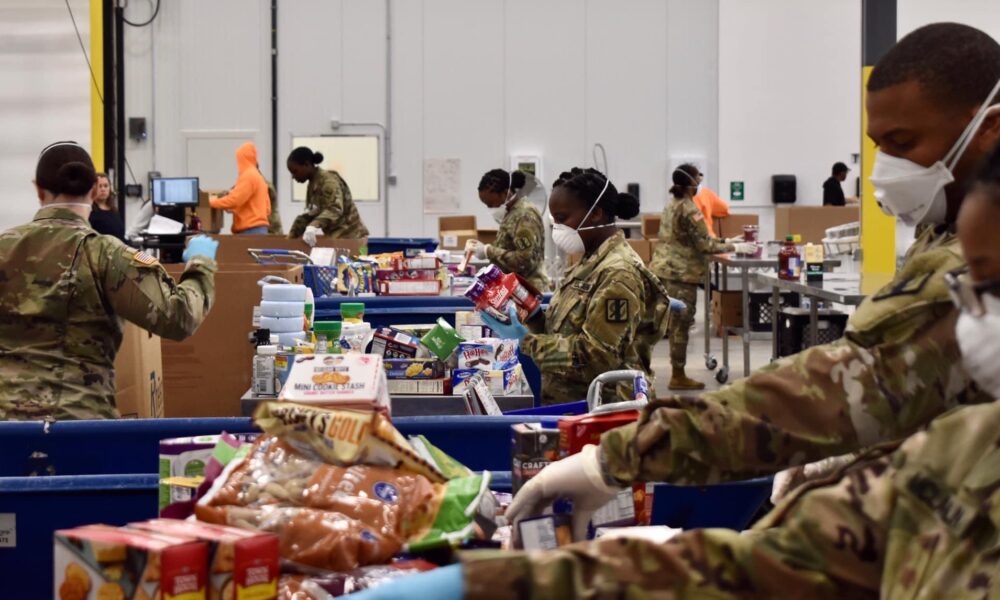With a deadline looming and the holidays just around the corner, federal lawmakers are busy trying to pass legislation to approve federal government funding through September 2023, the end of this fiscal year. The Consolidation Appropriations Act of 2023 (also known as the omnibus spending bill) includes funding for the federal government’s discretionary spending.
One of the big pieces on the table is support for summer meals for children, a small part of programs authorized by larger child nutrition legislation known as the Healthy Hunger-Free Kids Act (HHFKA). This is important because, during the summer, children often do not have access to their free or reduced-cost lunch at school. Many groups and advocates consider this legislation to be an important step in preventing child hunger in the United States. But apparently, we cannot have one good thing without paying for it by sacrificing another.
I say that because, just like in 2010 when Congress passed the HHFKA and paid for it with premature cuts to the Supplemental Nutrition Assistance Program (SNAP, previously “food stamps”), SNAP and the people who rely on it are in danger again. Currently, expanded benefits that were enacted in response to the COVID-19 public health emergency could be cut at the end of February—regardless of whether a national emergency continues—through the omnibus bill.
A dramatic cut in SNAP will cause a so-called hunger cliff. This occurs when, from one month to the next, people suddenly lose a significant amount of their benefits and are not able to feed their families. So while we can applaud congressional efforts this week to support child nutrition in the summer, it should not come at the cost of children’s (and others’) nutrition at any other time during the year.
A symptom of a bigger problem
Many of us will remember being shocked by media images of miles-long lines at food pantries early in the pandemic—and we’re witnessing a repeat due to dramatic inflation. Yet what should be most shocking is the fact that food insecurity is a chronic condition in the United States. Over the past 20 years, between one in six and 1 in 10 households were reported to be food insecure. The rates are even higher for African American and Hispanic communities, at times reaching one in four households.
SNAP is one of the mechanisms through which the federal government supports communities, and it helps millions of US households keep food on the table each month. In the last two years, because of the pandemic, the government expanded SNAP benefits multiple times, including the current emergency allotment of at least $95 per household. This, combined with the historic 2021 revision of the Thrifty Food Plan that guides the USDA in setting benefit amounts, means that average monthly per-person SNAP benefits rose from $121 in February 2020 to $224 in September 2022. This is a positive development since SNAP was previously insufficient—many families reported not being able to afford food at the end of the month.
Programs such as SNAP are particularly important during emergencies such as the COVID-19 pandemic and inflation. The pandemic led to widespread job losses and lower earnings while increasing the burden of health care costs. This is why it was so important that the federal government stepped up and provided much-needed relief. These benefits help: the most recent food insecurity data (from December 2021) actually showed a small decrease in food insecurity during a global emergency.
SNAP is an important anti-poverty program—it may even prevent intergenerational poverty
Since the start of the pandemic, SNAP served approximately 42 million people each month, allowing them to extend their already stretched food budgets. In a survey of food pantry clients, many reported having to choose between food and other basic needs such as housing and utilities. The data on the impact of the pandemic show that 39.5 percent of people nationally have difficulty paying for household expenses and 22.1 percent of people were unable to pay for energy in the past year. For these people, having access to adequate benefits to help with food purchases is essential.
Having money to purchase food also helps in other ways, as food insecurity is linked to both higher health care costs and worse educational outcomes. In other words, those who are food insecure spend more money on health care and their children have lower earning potential in life, thus feeding intergenerational poverty. The US Census estimated that, in 2018, SNAP reduced the poverty rate by 1.1 percent for adults and 2 percent for children. This means that SNAP keeps millions of people above the poverty line.
SNAP serves both urban and rural communities—and helps local economies
A previous analysis by UCS demonstrated that, while cities have a high number of people who use SNAP, rural areas tend to have the highest proportion of households for whom SNAP is integral in being able to afford food. Out of the top 150 counties with the highest proportion of population that receive SNAP, 136 were identified as rural. The program is also important to populations including working households, households with seniors, and children.
Finally, I want to emphasize that SNAP also contributes to local economic development. USDA economists calculated that every dollar the government spends on SNAP produces 1.8 dollars of economic activity. Not only does this help food companies, but families are also able to stretch their budgets for other necessities, thus providing an economic boost that allows small businesses to provide jobs to the community as well.
The solution is not to cut SNAP but expand it, while addressing the root causes of food insecurity
The government should not behave like the national emergency is over—COVID-19 is still very much active in the United States and, coupled with this year’s flu season and other respiratory illnesses, it still represents a major cost that may prevent people from being able to afford food. And while inflation has slowed down (when we last checked, it was 12 percent for groceries over the last 12 months), SNAP will not compensate for the inflation experienced this year until October 2023. Cutting emergency SNAP allotments will cause a hunger cliff, leaving many hungry or relying on an already thinly stretched emergency food system. This is already happening in many states that decided not to extend these benefits, but many states have the opportunity to continue them based on the federal guidance. We stand with other advocates in support of continuing the pandemic SNAP allotments.
At the same time, let’s not forget that food insecurity rates, while fluctuating, have not been dropped below 10 percent in the past 20 years. Food insecurity in the United States is a chronic national emergency—and SNAP is one of the major ways our government can address it. While we advocate for food system transformation through the 2023 farm bill, it is essential that adequate SNAP benefits continue to stave off a deeper crisis.

